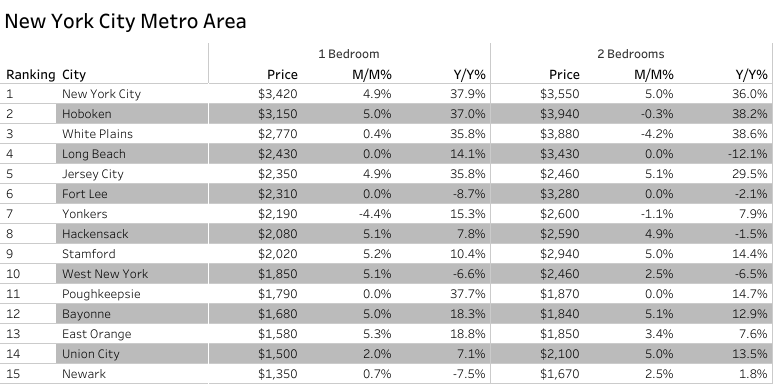
Willing to invest in real estate? Las Vegas is one of the best places to buy investment properties. This rapidly growing city is one of the hottest real estate markets in the United States. Right now it is the best time to buy and rent a property in Las Vegas, as the market has not reached its peak yet. But the question lies in which are the best neighborhoods for buying a Las Vegas investment property?
Where can you get a strong rental income as well as good equity in the long term? In this article, we’ll discuss the best neighborhoods where you can buy Las Vegas investment properties.
Las Vegas Housing Market: Trends and Insights
The Las Vegas housing market has experienced significant fluctuations in recent years, influenced by various economic and social factors. Understanding the current state and potential trends is crucial for anyone considering involvement in this market. Here's a breakdown of the present scenario and future prospects:
Current Market Snapshot
- Home Prices: Despite a recent dip in prices, the median sales price for a single-family home in September 2023 was $410,000, reflecting a 0% increase from a year ago (Redfin).
- Days on Market: The median days on the market increased to 37 in September 2023, a slight uptick from the previous month but still notably lower than a year ago.
- Inventory: Inventory increased to 6,560 active home listings in September 2023, providing buyers with more options compared to a year ago.
While the market still favors sellers, the increasing inventory suggests a shift towards a more balanced scenario, granting buyers more negotiation power.
Key Trends to Monitor
Several trends are anticipated to shape the Las Vegas housing market in the months to come:
- Rising Interest Rates: The continuous rise in interest rates could increase the cost of borrowing for home purchases, potentially impacting demand negatively.
- Inflation Impact: The current high inflation rates may strain household budgets, potentially resulting in reduced demand for homes as individuals reassess their financial capabilities.
- Job Growth: Las Vegas' rapid growth is expected to persist, fueling long-term housing demand due to an expanding population and employment opportunities.
- New Construction: The increasing pace of new construction in Las Vegas will contribute to higher inventory levels, affording buyers more choices.
While stability is expected in the Las Vegas housing market, factors like rising interest rates and inflation could slow down demand in the near future.
Best Places To Buy Las Vegas Investment Properties
Las Vegas has a large no. of renters. Therefore, buying investment properties in Las Vegas, and renting them out is an excellent choice for real estate investors. Here are some of the good neighborhoods in and around Las Vegas where you can buy investment properties.
1. Summerlin
Summerlin, a meticulously planned community situated in the northwest Las Vegas Valley, offers a diverse array of housing options, including single-family homes, townhouses, and condominiums. This area is recognized for its excellent educational institutions, well-maintained parks, and bustling shopping centers, making it a top choice for both families and professionals.
2. Henderson
Henderson, located just to the south of Las Vegas, is celebrated for its safe neighborhoods, reputable schools, and abundant recreational opportunities. Additionally, it boasts a burgeoning business landscape and a range of industries. Due to these features, it is a favored location among families and retirees.
3. Green Valley
Green Valley, a neighborhood within Henderson, stands out for its luxurious residences, golf courses, and shopping hubs. This locale is particularly appealing to retirees and families with young children due to its upscale lifestyle offerings.
4. North Las Vegas
North Las Vegas is characterized by its diversified community and housing options, ranging from single-family homes to apartments and mobile homes. It hosts various businesses and industries, making it an attractive choice for working-class families and young professionals.
5. Downtown Las Vegas
Downtown Las Vegas, experiencing a recent rejuvenation, has transformed into a vibrant hub boasting new restaurants, bars, and casinos. Notably, the area houses the iconic Fremont Street Experience, a significant tourist attraction. With its rejuvenation, downtown Las Vegas has emerged as a prime location for short-term rentals and has garnered significant attention from property investors.
Choosing the right investment location in Las Vegas necessitates an in-depth analysis of various factors, including your investment goals and the preferences of your target renters.
Should You Invest In Las Vegas Investment Properties?
Las Vegas is a hot real estate market for locals and tourists alike. It is one of the cities on the West Coast that still offers affordable housing to residents, more people are transitioning to the city for new manufacturing jobs in the area.
Although the cost of living in Nevada is 4% higher than the US average, it is still much more affordable than in California. A median home price in Los Angeles is roughly three times the median home price in Las Vegas, the most expensive city to live in Nevada.
Investing in Las Vegas investment properties can be a lucrative endeavor for many individuals, whether they are seasoned real estate investors or newcomers to the field. The city's unique characteristics and opportunities make it an appealing choice. Below, we outline the top reasons why you should consider investing in Las Vegas real estate:
1. Booming Real Estate Market
- Rapid Appreciation: Las Vegas has witnessed consistent property value appreciation over the years, making it an attractive market for investors seeking long-term growth in their investments.
- High Demand: The demand for housing in Las Vegas remains high, driven by population growth, a robust job market, and an influx of tourists. This demand translates into excellent opportunities for property investors.
2. Diverse Investment Options
- Residential Properties: Las Vegas offers a diverse range of residential properties, including single-family homes, condos, apartments, and luxury villas, catering to various investment preferences and budget constraints.
- Commercial Real Estate: Beyond residential properties, Las Vegas provides ample opportunities in the commercial real estate sector, encompassing office spaces, retail outlets, hotels, and more.
3. Tourism and Entertainment Industry
- Tourist Attraction: Las Vegas is a globally renowned tourist destination, attracting millions of visitors annually. The thriving tourism industry creates a consistent demand for short-term rentals, making it a great opportunity for real estate investors.
- Entertainment Capital: As the entertainment capital of the world, Las Vegas hosts numerous events, shows, and conventions, ensuring a steady influx of visitors seeking accommodation, entertainment, and business opportunities.
4. Favorable Economic Conditions
- Business Growth: Las Vegas has been experiencing significant economic growth, attracting businesses across various sectors. This growth leads to a rise in employment rates and an increased demand for housing.
- Tax Benefits: Nevada's favorable tax policies, including no state income tax, make it an appealing choice for real estate investors, offering potential financial advantages.
5. Strategic Location and Infrastructure
- Accessibility: Las Vegas is well-connected by air, road, and rail, making it a convenient location for both residents and visitors. Its proximity to major cities and transportation hubs enhances its investment potential.
- Developing Infrastructure: The continuous development of infrastructure projects, such as improved highways, public transportation systems, and commercial facilities, augments the overall attractiveness of the city for potential investors.
6. Investor-Friendly Environment
- Supportive Regulations: Las Vegas offers a conducive regulatory environment for real estate investors, with clear property laws, efficient property registration processes, and other regulations that facilitate smooth transactions.
- Professional Support: The city has a pool of experienced real estate professionals, including agents, property managers, and legal experts, who can assist investors in making informed decisions and managing their properties effectively.
Factors to Consider When Choosing an Investment Property in Vegas
When embarking on the journey to choose the perfect investment property, several key factors must be taken into account to ensure a successful investment venture. Here are the critical aspects to consider:
1. Location
The location of the investment property is a fundamental factor that significantly influences its value and potential rental income. It is advisable to opt for a property situated in a sought-after neighborhood, close to amenities and reputable schools.
2. Property Type
The type of property you select plays a crucial role in determining its value and rental income potential. Single-family homes, though more expensive to purchase, tend to yield higher rental income. On the other hand, condominiums and townhouses are more affordable in terms of purchase price, albeit potentially generating lower rental income.
3. Property Condition
Assessing the condition of the property is vital. It's advisable to avoid properties that require significant repairs or renovations, as these can incur high costs and delays in making the property rental-ready.
4. Rental Market Analysis
Conduct a thorough analysis of the rental market in the targeted area. Evaluate rental rates for similar properties and vacancy rates to gauge the demand and potential return on investment.
5. Collaboration with a Qualified Real Estate Agent
Engaging the services of a proficient real estate agent is essential in your quest for the perfect investment property. A qualified agent can guide you in finding the most suitable investment property aligned with your investment objectives and preferences.
Choosing an investment property demands careful consideration of these factors to make an informed decision that aligns with your investment goals. Collaborating with professionals in the real estate industry can further enhance your investment journey


